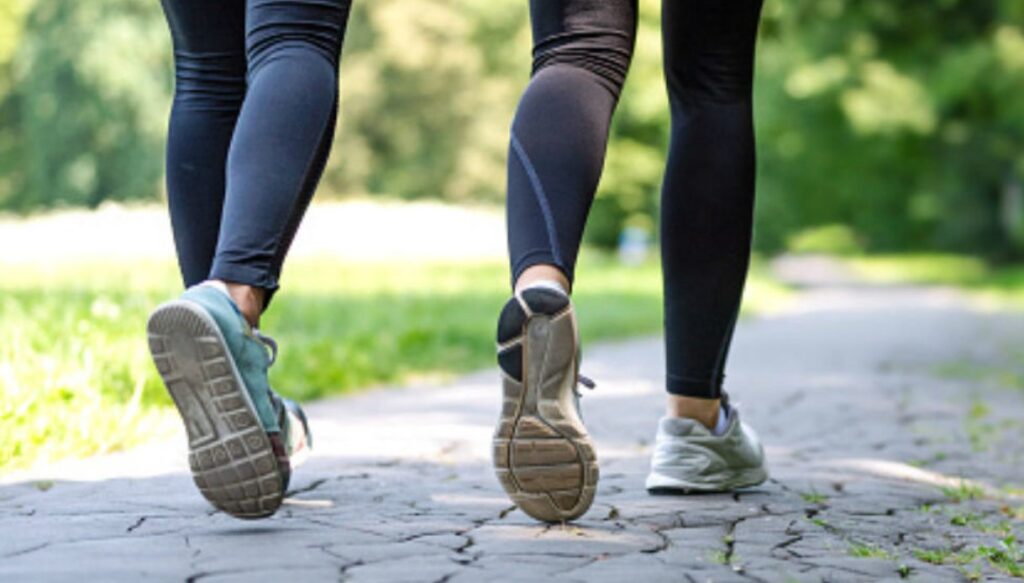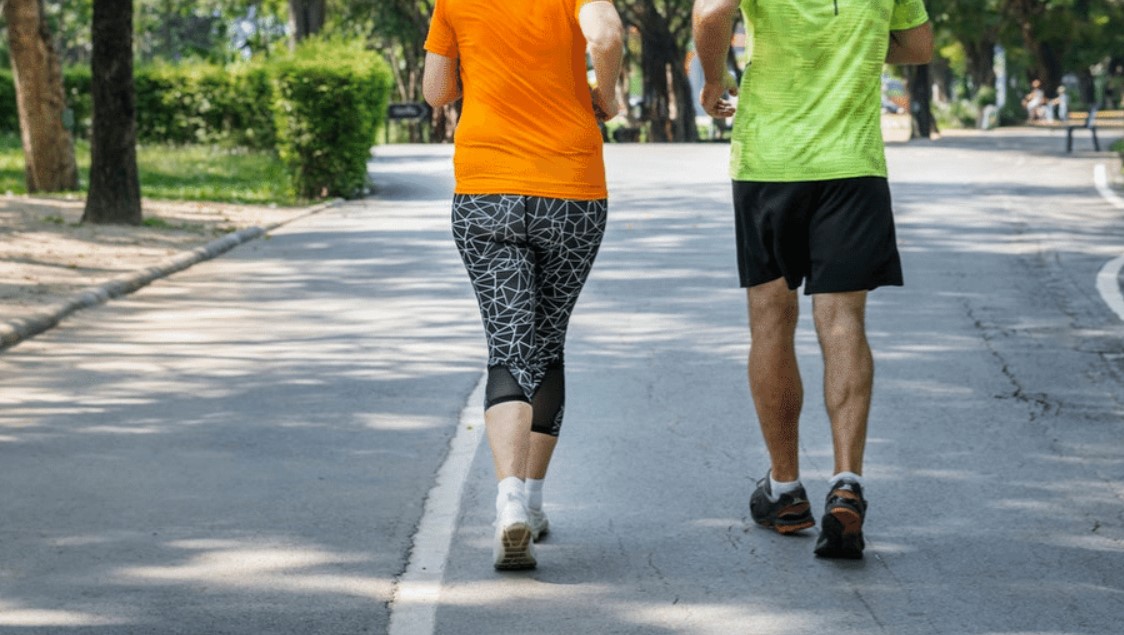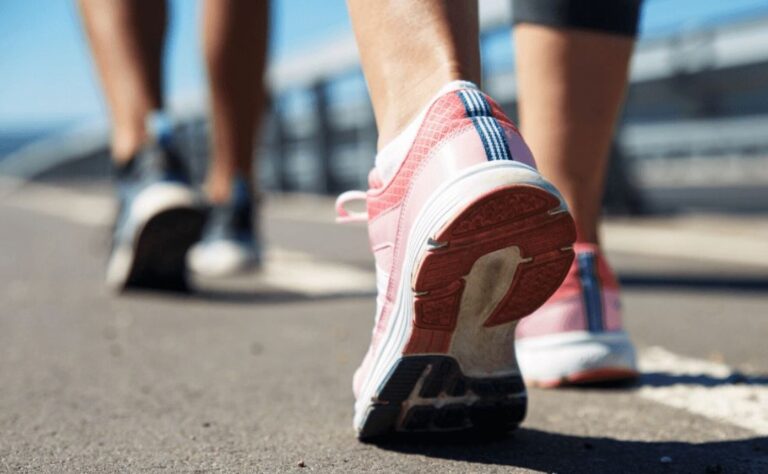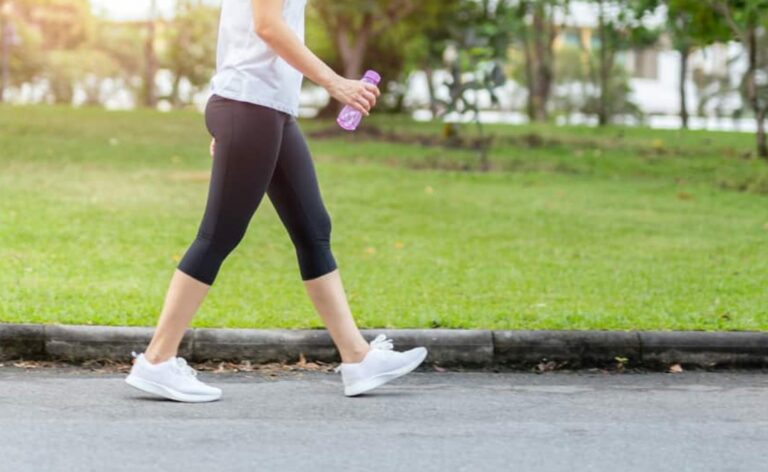Is Walking Effective Exercise?
Walking is an effective form of exercise. It can provide numerous health benefits with minimal impact on joints and muscles.
Walking is a low-intensity cardiovascular workout that improves heart function, circulation, and lowers stress levels. Additionally, walking can help maintain a healthy weight, increase muscle strength and flexibility. It is a relatively low-risk activity that people of all ages and fitness levels can adopt.
Walking has the added benefit of being free, requiring no special equipment or gym membership. Whether walking for leisure or as part of a fitness routine, it is an excellent way to stay active and improve overall health.
Benefits Of Walking For Physical Health
Walking is often underestimated when it comes to exercise. It may seem like a simple act, but it has numerous physical and mental benefits. In this section, we will focus on the physical health benefits that walking provides. So, grab your walking shoes, and let’s dive into the benefits of walking for physical health!
Increases Cardiovascular Health
Walking can be a great exercise to boost your cardiovascular health. Some of the key benefits include:
- Lowering the risk of heart diseases and strokes
- Decreasing blood pressure
- Improving blood circulation
- Strengthening the heart and other muscles
Strengthens Bones And Muscles
Walking is a weight-bearing exercise that can help in building and maintaining healthy bones and muscles. Below are some of the key benefits:
- Enhancing bone density
- Strengthening the leg and hip muscles
- Improving balance and coordination
- Reducing the risk of falls and fractures
Reduces Risk Of Chronic Diseases
Several chronic diseases are related to poor physical health. Walking can reduce the risk of such diseases, including:
- Type 2 diabetes
- Osteoporosis
- Certain types of cancer
- Arthritis
Promotes Weight Loss
Walking can also be a great exercise for managing body weight and shedding some extra pounds. Here are some of the benefits:
- Burning calories
- Boosting metabolism
- Reducing belly fat
- Improving body composition
Walking is a simple and effective exercise that provides numerous physical health benefits. It is low-impact, inexpensive, and does not require any equipment or a gym membership. So, put on your walking shoes and incorporate walking into your daily routine to reap these benefits and improve your overall physical health.
Walking Vs. Other Forms Of Exercise
Walking is one of the simplest forms of exercise that anyone can enjoy. Unlike running or cycling, it requires no special equipment or gym memberships. But the question is, is it an effective form of exercise? Let’s compare walking with other forms of exercise to find out.
Aerobic Vs Anaerobic Exercise
Aerobic exercise involves using large muscle groups in a rhythmic manner to improve oxygen consumption. On the other hand, anaerobic exercise involves intense bursts of activity that quickly deplete oxygen in the muscles.
- Walking is primarily an aerobic exercise that improves cardiorespiratory fitness and endurance.
- Anaerobic exercise, such as weightlifting or sprinting, is great for building strength and power, but not as effective for improving cardiovascular health.
Comparison Of Walking With Running, Cycling, And Swimming
Walking is a low-impact exercise that is ideal for people of all fitness levels. But how does it compare with other popular forms of exercise, such as running, cycling, and swimming?
- Running is a highly effective form of cardio exercise that burns a lot of calories in a short amount of time. However, it can be tough on the joints and requires a higher level of fitness.
- Cycling is a low-impact exercise that is easier on the joints than running. It is also an effective form of cardio exercise that can help build endurance and burn calories.
- Swimming is a full-body workout that is easy on the joints and can improve flexibility, strength, and endurance.
However, walking has some unique advantages over these other forms of exercise:
- Walking is low-impact and puts less strain on the joints and muscles compared to running or hiit.
- Walking is a gentle exercise that can be done at any time of the day without requiring any equipment.
- Walking provides an opportunity to enjoy the outdoors and can be a great form of stress relief.
Low Impact Exercise
Low-impact exercises are those that are gentle on the joints and are less likely to cause injury. Walking is considered a low-impact exercise because it doesn’t put excessive strain on the bones and joints.
- Walking is an ideal form of exercise for people with joint pain or osteoporosis.
- Low-impact exercises are great for older adults who may not be able to engage in high-impact exercises due to physical limitations.
Walking is an effective form of exercise that has a range of benefits for people of all ages and physical abilities. It is a low-impact exercise that is easier on the joints than other popular forms of exercise like running and cycling.
So, if you’re looking for a simple and convenient way to improve your health, then walking could be the perfect exercise for you.
Psychological Benefits Of Walking
Is Walking Effective Exercise?
Walking is an effortless way to get some exercise while getting fresh air and taking in the scenery. Apart from physical health benefits, walking can also do wonders for your mental health. In this blog post, we’ll take a closer look at the psychological benefits of walking.
Reduces Stress And Anxiety
If you’re feeling stressed or anxious, walking might be the solution you’ve been looking for. According to research, walking can have a calming effect on your mind and reduce anxiety levels. Moreover, it stimulates the production of endorphins in the brain, which act as natural painkillers and mood elevators.
Some of the ways walking reduces stress and anxiety include:
- Encouraging mindfulness, which can help you stay in the present moment and take your mind off anxious thoughts.
- Reducing muscle tension and promoting relaxation, which can combat physical symptoms of anxiety, such as headaches and racing heart.
- Improving sleep quality, which is essential for maintaining good mental health.
Boosts Mood And Confidence
Walking can also boost your mood and self-confidence in several ways. Firstly, it’s a low-intensity exercise, meaning that it can help you feel more energized without exhausting yourself. Secondly, it’s an easy activity to integrate into your daily routine, which can lead to a sense of accomplishment and satisfaction.
Additionally, walking in nature has been shown to improve mood and self-esteem, especially if you’re feeling down or anxious.
Improves Cognitive Function
Walking isn’t just good for your body and soul; it’s also beneficial for your mind. Research suggests that walking can improve cognitive function in several ways, including:
- Boosting brain-derived neurotrophic factor (bdnf), which plays a crucial role in the growth and maintenance of neurons in the brain, improving memory and learning abilities.
- Reducing inflammation in the brain, which has been linked to cognitive decline and neurological disorders.
- Stimulating the production of neurotransmitters that improve mood, such as serotonin and dopamine.
Encourages Social Interaction
Walking can also be a social activity, which can have numerous benefits for your mental health. Walking with friends or family can provide a sense of connection and belonging, reduce loneliness and stress, and improve overall well-being. Whether you join a walking group, walk with a partner, or take your dog for a walk, walking with others can make the activity more enjoyable and help you stay motivated.
Walking is not only an effective form of exercise but also a potent mood booster, anxiety reducer, and cognitive enhancer. So, put on your walking shoes, grab a friend, and take a stroll in nature to enjoy the full range of benefits that walking has to offer.
Getting Started With Walking For Exercise
Have you been wanting to improve your physical activity but aren’t sure where to start? Walking is an excellent way to incorporate exercise into your routine, and it’s free!

Choosing The Right Footwear
Before you start your walking routine, make sure you choose proper footwear to prevent any foot or leg injuries. Here are some key points to consider when choosing your footwear:
- Look for shoes with good arch support and shock absorption to protect your feet and joints.
- Choose shoes that fit well and are comfortable to walk in, but also provide stability and grip.
- Avoid shoes that are too tight or too loose, and make sure they are breathable and suited for the weather conditions you will be walking in.
Setting Realistic Goals
Setting realistic goals is essential to keep yourself motivated and to track your progress. Here are some key points to consider when setting up your walking goals:
- Start small if you’re new to exercising; aim for 10-15 minutes of walking per day and gradually increase the time and intensity as your body becomes accustomed to the activity.
- Set a goal of 30 minutes of brisk walking at least five times a week for general health benefits.
- Consider tracking your progress with a pedometer or a mobile application that can help you set measurable goals and track your progress.
Creating A Walking Routine
Creating a walking routine is crucial to staying motivated and maintaining your progress. Here are some key points to consider when creating your routine:
- Select a convenient time and location that works with your schedule and is safe and comfortable to walk in.
- Incorporate different walking routes and terrains to keep your routine interesting and challenging.
- Make it social by asking friends or family to join you in your walking routine.
Tracking Progress
Tracking your progress is an effective way to stay motivated and aware of your progress. Here are some key points to consider when tracking your progress:
- Keep a record of the distance, time, and intensity of your walks to monitor and assess your improvements.
- Celebrate your achievements and milestones to keep yourself motivated and positive.
- Use technology to track your progress automatically, such as fitness applications and wearable devices.
Remember, an exercise routine is a personal experience, and it’s essential to find what works best for you. Walking can be an effective exercise when complemented by a healthy diet and a balanced lifestyle. So, wear the right footwear, set some realistic goals, create a routine and keep track of your progress- and start walking towards a healthier lifestyle!
Tips And Tricks For Maximizing The Benefits Of Walking
Walking is one of the most popular and accessible exercises there is, but is it effective? The short answer is yes! Walking provides numerous physical and mental benefits, including improved cardiovascular health, weight loss, reduced stress, and increased energy levels.
However, to maximize these benefits, there are several tips and tricks to keep in mind. In this post, we’ll explore how to incorporate walking into your daily life, vary walking speed and terrain, add resistance with weights or hills, and combine walking with other activities.
Incorporating Walking Into Daily Life
Walking doesn’t have to be a formal exercise routine. Here are some ways to incorporate more walking into your daily life:
- Take the stairs instead of the elevator or escalator.
- Get off the bus or train a stop or two early and walk to your destination.
- Park farther away from your destination and walk the rest of the way.
- Take a walking meeting instead of sitting in a conference room.
- Use a standing desk and take walking breaks throughout the day.
Varying Walking Speed And Terrain
Mixing up your walking speed and terrain challenges your body and can prevent boredom. Here are some ways to vary your walking routine:
- Alternate between fast-paced and leisurely walking.
- Take shorter, quicker steps to engage your glutes and legs.
- Find walking trails with hills or inclines to increase the intensity of your workout.
- Incorporate bursts of jogging or running into your walk to increase your heart rate.
Adding Resistance With Weights Or Hills
Adding resistance to your walk helps build strength and increases calorie burn. Here are some ways to add resistance to your routine:
- Use hand weights or ankle weights to increase the intensity of your workout.
- Walk uphill or on an incline to engage different muscles and increase the calorie burn.
- Push a stroller or carry a backpack filled with weights for added resistance.
Combining Walking With Other Activities
Combining walking with other activities adds variety and can be a fun way to challenge yourself. Here are some ways to combine walking with other activities:
- Walk to a nearby yoga or fitness class.
- Take a scenic hike or nature walk with friends or family.
- Attend a walking or running event, such as a charity walk or 5k race.
- Go on a walking tour of a city or neighborhood.
Walking is indeed an effective exercise that provides numerous physical and mental benefits. By incorporating walking into your daily life, varying walking speed and terrain, adding resistance with weights or hills, and combining walking with other activities, you can maximize the benefits and keep your routine interesting and challenging.
So, grab your sneakers and get walking!
Frequently Asked Questions
Is Walking An Effective Form Of Exercise For Weight Loss?
Yes, walking is a great way to lose weight. Depending on how fast you walk, you can burn up to 400-500 calories per hour. Plus, walking is relatively low-impact, making it accessible to people of all ages and fitness levels.
Is Walking Enough Exercise For A Healthy Lifestyle?
While walking is a good form of exercise, it should be combined with other forms of physical activity to achieve overall health. Aim for at least 150 minutes per week of moderate-intensity exercise, such as cycling or swimming, in addition to walking.
How Can I Make Walking More Challenging?
To increase the challenge of walking, try incorporating hills or intervals into your routine. You can also add ankle weights or carry hand weights to increase the intensity of your workout. And don’t forget to stretch before and after your walk to prevent injury.
Conclusion
Walking is an effective and beneficial exercise that provides numerous health benefits, including weight loss, improved cardiovascular health, and reduced stress levels. With no special equipment needed, it is a straightforward and low-impact exercise that is suitable for individuals of all fitness levels and ages.
Moreover, walking can easily be incorporated into one’s daily routine, making it an excellent choice for those with a busy lifestyle. It not only helps you feel more energized but also promotes better sleep quality. However, to get the most benefits, it is essential to maintain a consistent walking routine and gradually increase the duration and intensity of your walks.
Walking is a cost-effective way to improve and maintain your overall physical and mental health. So, get moving and start walking today!







